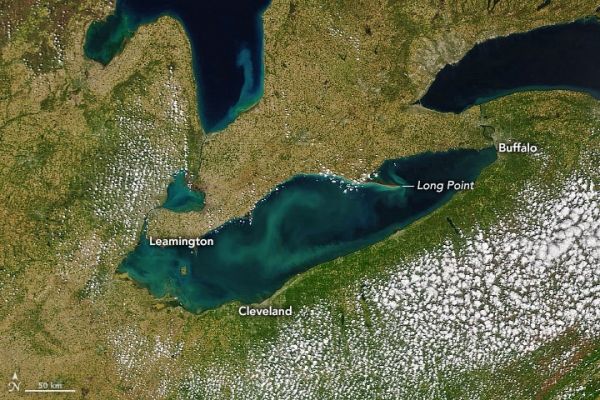While farmlands and forests onshore create spring and summer color, the Great Lakes have their own ways of painting seasonal pictures. Rich with quartz sand and silt, chalky limestone, and abundant phytoplankton, Lake Erie often stands out with its warm-weather brush strokes.
On May 12, 2021, the Moderate Resolution Imaging Spectroradiometer (MODIS) on NASA’s Terra satellite acquired the natural-color image above. Swirls of green and chalky blue trace a blend of biological, chemical, and physical activity. Though it is impossible to say for sure without in situ observations, the colors likely show seiches, whiting events, sediment outflows, and phytoplankton or algae blooms.
Whiting events tend to occur in the middle of the lake when changes in water chemistry—often spurred by temperature shifts—increase the rate of photosynthesis by microscopic marine life. The changes can cause a sudden precipitation of calcium carbonate particles just below the water surface. Near the shore, spring runoff from rivers and streams can carry colorful sediment into the lake. Fed by the nutrients in that runoff, phytoplankton and algae usually start to flourish in June and July as the water warms and stratifies, with algae populations tending to peak in August and September.
Continue reading at NASA Earth Observatory
Image via NASA Earth Observatory


